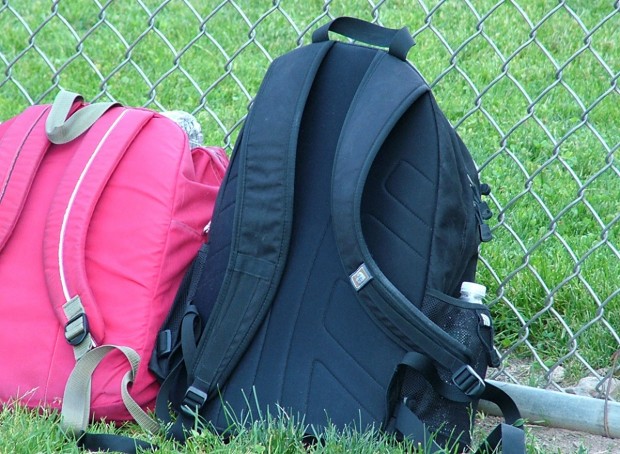Heavy Backpacks: Help Your Child Avoid Neck and Back Strain
 It’s that time of year again – back-to-school! It’s important to be aware of the potential injuries your child’s backpack can cause. Many children carry backpacks that are far too heavy thus increasing their vulnerability for injuries. When carried correctly, a traditional backpack is easier on the back and shoulders than most other bags including one-shoulder backpacks. This is because the strongest muscles in the body, the back and abdominal muscles, support the weight of the load. Backpacks worn using both the shoulder and hip straps are less likely to cause neck and shoulder pain for your child because it helps distribute weight more evenly across the body. Texas Children’s Hospital has put together a few guidelines to help parents ensure their child avoids neck and back pain caused by heavy backpacks:
It’s that time of year again – back-to-school! It’s important to be aware of the potential injuries your child’s backpack can cause. Many children carry backpacks that are far too heavy thus increasing their vulnerability for injuries. When carried correctly, a traditional backpack is easier on the back and shoulders than most other bags including one-shoulder backpacks. This is because the strongest muscles in the body, the back and abdominal muscles, support the weight of the load. Backpacks worn using both the shoulder and hip straps are less likely to cause neck and shoulder pain for your child because it helps distribute weight more evenly across the body. Texas Children’s Hospital has put together a few guidelines to help parents ensure their child avoids neck and back pain caused by heavy backpacks:
- Choose a backpack with two wide, padded shoulder straps and a waist strap. Rolling backpacks are also a good choice.
- When filled, a backpack should weigh no more than 10 to 15 percent of your child’s body weight. That means if your child weighs 80 pounds, the backpack should weigh no more than 8 to 12 pounds.
- Make sure your child packs the heaviest items closest to the body.
- Teach your child to lift heavy objects by bending at the knees and lifting with both legs.
- Make sure your child uses both shoulder straps over both shoulders – slinging it over one shoulder increases the risk of an injury.
- Adjust the straps of the backpack to fit snugly around your child’s shoulders and hips with weight carried no lower than 2 to 4 inches below the waist.
- Ask your child if there are a few textbooks they can leave at home so they do not have to carry all of the books back and forth to school.
- Encourage your child to participate in a regular exercise routine to gain overall strength and stamina.
Following these guidelines will help your child prevent neck or back injury from a heavy backpack. You also can prepare for a healthy school year by ensuring your child has received their annual physical exam, has healthy sleeping habits and eats a nutritious breakfast and lunch daily. For more information about Texas Children’s Orthopedics, visit here.
This post was originally published on the Texas Children's Blog here.
Want more buzz like this? Sign up for our Morning Buzz emails.
To leave a comment, please log in or create an account with The Buzz Magazines, Disqus, Facebook, or Twitter. Or you may post as a guest.


